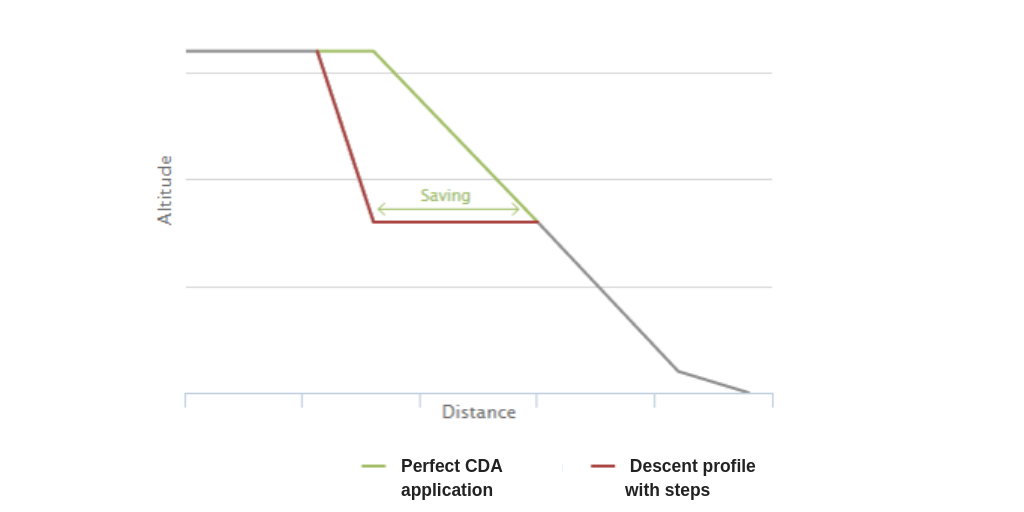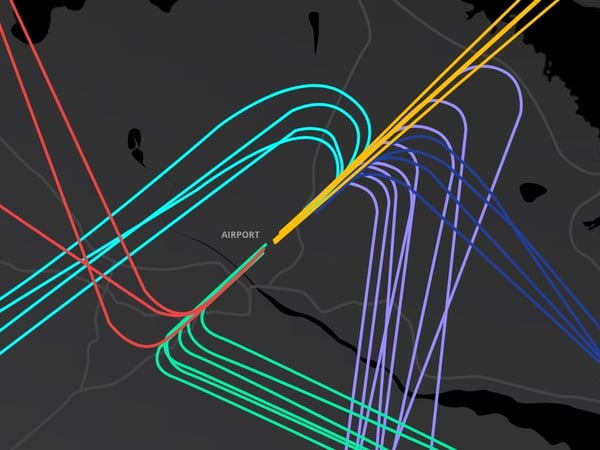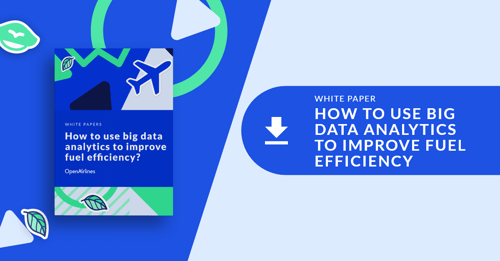Harnessing Artificial Intelligence to boost fuel efficiency
In the ever-evolving landscape of technology, one of the most remarkable developments is Artificial Intelligence (AI). With its ability to process vast amounts of data, recognize patterns, and make intelligent decisions, AI is creating new opportunities in the field of fuel efficiency.
Within the aviation industry, there are multiple fuel-saving actions - commonly referred to as fuel efficiency best practices - that airline operators can implement to reduce aircraft fuel consumption. For example, by applying six fuel-saving initiatives, Philippine Airlines saved 3.7 million kilograms of fuel in 9 months!
Download now >> Philippine Airlines steps up to fuel efficiency with an intelligent solution [Free Case Study]
While these results are impressive, one question remains: How exactly are these figures calculated? In this article, we explain how AI is used in data computation in OpenAirlines' SkyBreathe® 360° eco-flying platform to deliver accurate and actionable fuel insights to airline crew and staff.
The role of artificial intelligence and advanced algorithms
To calculate fuel savings associated with a specific fuel efficiency best practice, one must establish a baseline for comparison. Therefore, the first step is to compute how much fuel would have been consumed if this best practice had not been applied.
To do so, we establish a list of flights that did not implement any best practices and aggregate them into distinct "flight models." This enables the fuel efficiency software to compare the performance of any given flight to these models and calculate the corresponding fuel savings. Therefore, the main challenge lies in determining which criteria to use to group flights into the same model. In other words, how can we determine which flights are similar enough to be combined into the same group?
The answer is… it depends on the best practice! In many cases, models are calculated based on the aircraft type only. For example, if we are monitoring the fuel-saving best practice known as Reduced Flaps at Landing (RFLA) with a fleet that includes A-320 and A-320 neo aircraft, we would need two distinct "baseline" models - one for each aircraft type. Other models must also include airports, for instance, to compute savings from applying Idle Reverse Thrust.
Related Content >> Four questions about Idle Reverse Thrust [Free White Paper]
And it gets more complex! To address Continuous Descent Approach (CDA), flights with very similar trajectories need to be compiled, resulting in potentially hundreds of models for a single best practice! This is where machine learning can be valuable. As a specific branch of AI, machine learning uses advanced mathematical models and algorithms to analyze and identify patterns within data automatically. It uses that knowledge to improve decision-making progressively. Some algorithms can cluster routes with very high precision and accuracy.
Use case: AI application for Continuous Descent Approach
To illustrate how artificial intelligence can improve our models’ precision, let’s take a closer look at this CDA best practice. According to our recent survey, CDA is one of the most common fuel-saving procedures applied by pilots, conditions permitting. This approach involves adopting a smooth constant angle descent at idle thrust for landing instead of the step-by-step descent, which requires many energy-hungry throttle adjustments.
 CDA approach VS step-by-step descent.
CDA approach VS step-by-step descent.
There are many ways to apply a continuous descent approach depending on the aircraft, the landing airport, the procedures… Therefore, models must reflect all approach trajectories within this best practice as closely as possible.
A straightforward way to do this is to use Standard Terminal Arrival Routes (STAR) procedures. We create a single model by aggregating all aircraft of the same type that follow the same STAR and arrive at the same airport. However, this technique is not foolproof: it can be challenging to detect the STARs, and on occasions, the flights do not follow a clearly defined STAR descent. Moreover, some airports can have many different approach procedures that follow similar trajectories, and it is unnecessary to create several baselines for each STAR procedure when they could be easily compiled into the same model (when considering CDA).
Leveraging machine learning to create flight clusters
To fix irrelevant models, we introduced machine learning to classify the possible approaches around one airport.
Returning to our previous example with the CDA, the algorithm identifies the Top of Descent (TOD) of each flight in the same geographical area – which is the point where the aircraft begins its descent. Once identified, the machine learning algorithm automatically groups all flights in the same area. Finally, the algorithm computes fuel burn associated with each group to create a baseline for that specific geographical area.
Although relying solely on the Top of Descent waypoint for our calculations may appear restrictive, we have achieved much better results in practice than with the STAR classification algorithm. The reason is quite simple: if the first two waypoints (TOD) are close geographically, all subsequent descent waypoints will globally follow the same trajectory in a CDA profile. Therefore, identifying the TOD is relevant to create an accurate baseline, and thanks to AI, we estimate that we have improved the precision of our models by nearly 60%.

Schematic representation of an algorithm identifying similar flight paths to create clusters
With great data analysis comes great results
This example shows that data science and artificial intelligence can significantly improve fuel efficiency analysis by enhancing our models’ precision. The approach outlined in this article is one application among many others in fuel efficiency and performance monitoring. Trajectory clustering is also used for computing our Short Approach best practice baselines in the Advanced Trajectory Module. What’s more, our APM module calculation is also based on advanced statistical models to compute performance deviation indicators. As a result, we can offer optimal recommendations to reduce fuel consumption effectively.
LEARN MORE
Download the White Paper >> How to use big data analytics to improve fuel efficiency?



